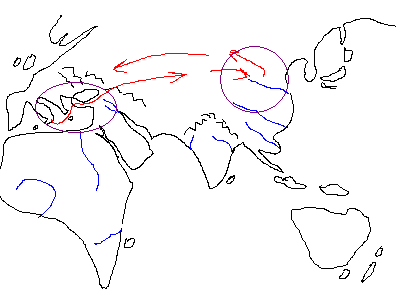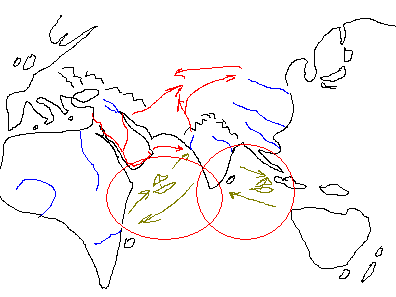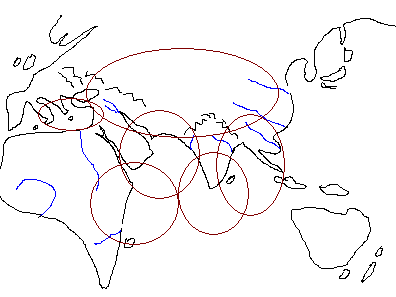Whether we call it 1500 AD (Anno Domini, or “in the year of our lord”) or 1500 CE (Common Era), you can expect that every people in the world would choose the same benchmark to start a survey course of world history. In the year 2005 CE, the Japanese are in the year the year Heisei 17 (17 years since emperor Showa died and his son took over) and for most Muslims in the world, the year is 1426 AH (years since Muhammad migrated to Medina). Systems of organizing time and change-over-time represent particular points-of-view. World Historians argue that around the time of the peak of the Roman and Han Chinese empires, between 200 BCE and 200CE, a Common Era was established that, for the first time in human history, linked peoples across languages and religions through more universal standards to facilitate more efficient trade (hence common currencies, weights and measures) and justice (through the non-partial Roman and Confucian Chinese concepts of justice. These vast empires were linked across the Eurasian Steppe through long distance trade and when the Han Chinese Empire finally fell in the third century, pressures across the Eurasian Steppe, eventually led to the collapse of the Roman Empire. Islam arose to fill the vacuum created by the fall of these regions. Trade networks shifted down the Arabian Peninsula and Mecca became a major center of cross-cultural contact and trade. While Christianity and Buddhism blossomed in the Roman and Han Chinese Empires respectively, Islam blossomed in the new context that would keep trade and exchange vibrant across Afro-Eurasia. Europe would not become a significant player again until the Renaissance in the century leading to 1500CE. Be able to trace changing trade networks from the Roman Han Chinese Common Era through the Islamic and Pax Mongolian period leading to the 1500. 1500CE, as a benchmark in world history, must be seen in this context if it is to make sense in the larger span of world history.
The map below on the left represents the Common Era linkage between the Roman and Han Empires between 200B.C.E. and 200C.E.; the map on the right illustrates the shift to the south and the centrality of the Abassid (Arab Muslim) and Tang/Song Chinese empires in the next trade system during the European "Dark Ages."


Finally, a brief period of "Pax Mongolia" (1250-1350) linked Europe to the whole of the Afro-Eurasian World Economy through the protected road system. Marco Polo and other merchants from the Mediterranean region travelled freely during this time and brought back the Great Plague to Europe from Asia.





